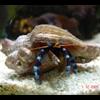-
Topics
-
Latest Update
-
1
-
0
WTS
Stable Zoa colony for sales or trade photo taken without any filter or editing -
1
Beginner SPS coral
Anyone interested? Sent from my CPH2525 using Tapatalk -
0
WTB: Macroalage
Looking for dragon breath, blue hyphae, and another other red types. not too keep in grape algae and cheto -
0
WTS Equipments and Test kit
Left over here pls whatsapp at 91165391 tks Bubble magus Fluidized reactor- $60 LED Light 8w 8000-12000k $10 Eheim 1262 without pump cover $60 Test kit all $30
-







Recommended Posts
Join the conversation
You can post now and register later. If you have an account, sign in now to post with your account.